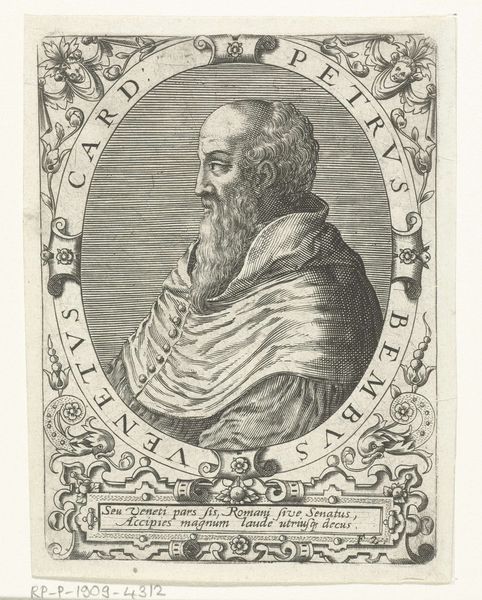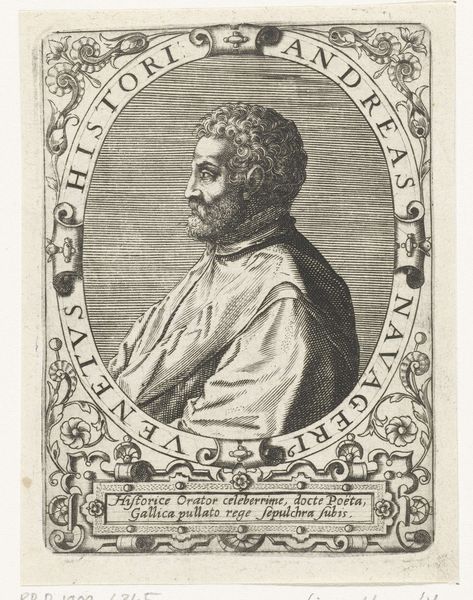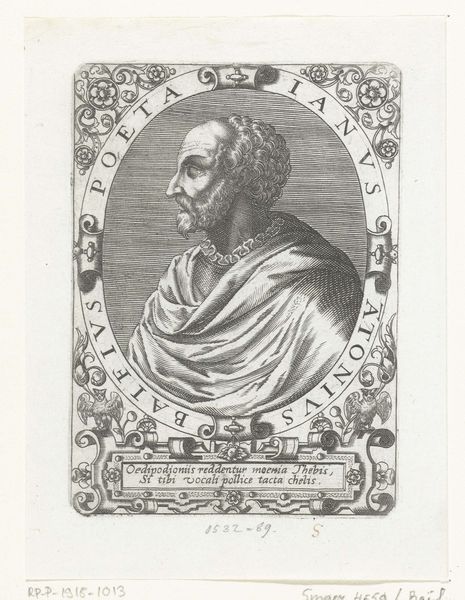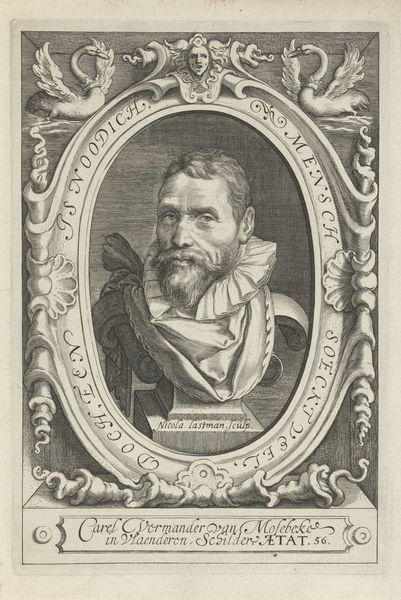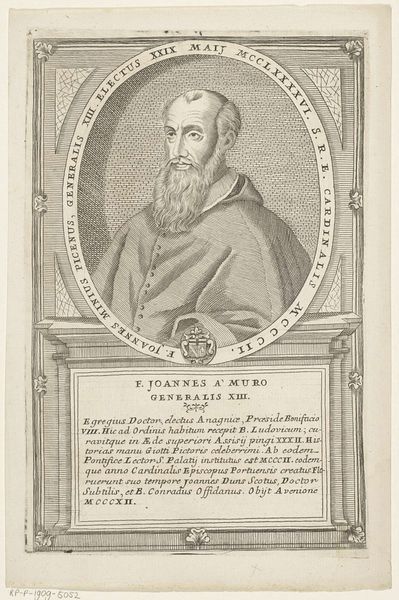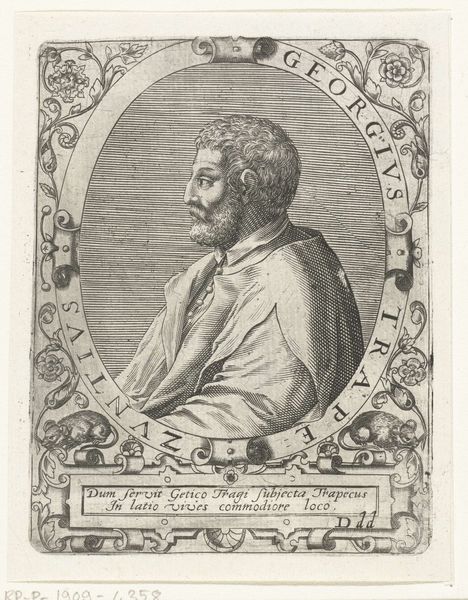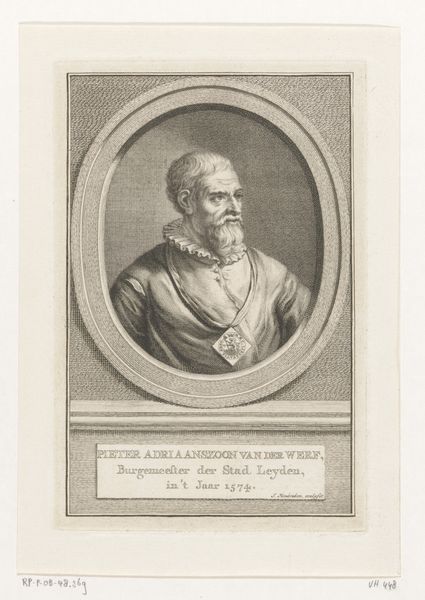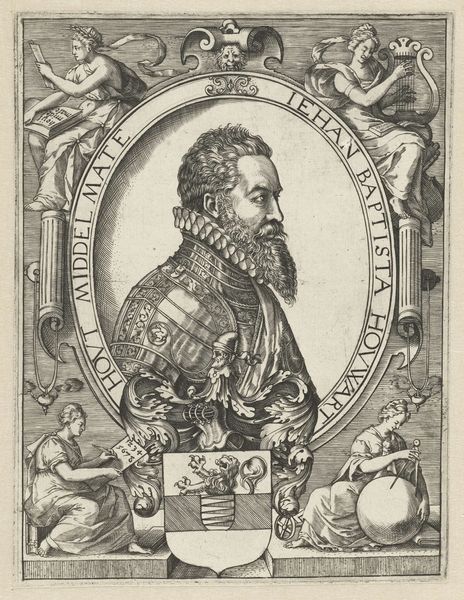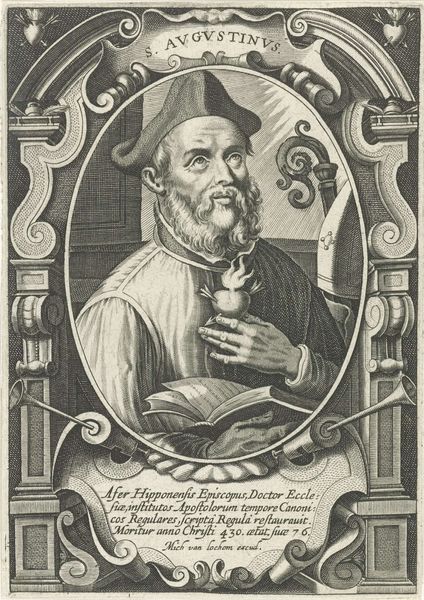
engraving
#
portrait
#
baroque
#
old engraving style
#
figuration
#
line
#
history-painting
#
engraving
Dimensions: height 392 mm, width 271 mm
Copyright: Rijks Museum: Open Domain
This engraving of Pieter Adriaansz. van der Werff was made by Pieter Philippe, presumably in the Netherlands sometime in the later 17th or early 18th century. It commemorates van der Werff’s role in the siege of Leiden in 1574. The image creates meaning through references to classical antiquity, which was a common practice during the Dutch Golden Age to create a sense of authority. Van der Werff is depicted within a laurel wreath, a symbol of triumph in ancient Rome, and the inscription at the bottom refers to Roman figures, therefore linking the sitter to the virtue and prestige of the ancient world. The siege of Leiden was a crucial moment in Dutch history, marking a turning point in the country's struggle for independence from Spanish rule. Van der Werff was the mayor of Leiden during the siege, and his leadership was instrumental in the city's successful resistance. He refused to surrender the city to the Spanish, even when faced with starvation and overwhelming odds. To learn more about this image, one could consult primary source documents from the period, such as letters, diaries, and official records. These sources can provide valuable insights into the historical context in which the artwork was produced.
Comments
No comments
Be the first to comment and join the conversation on the ultimate creative platform.

